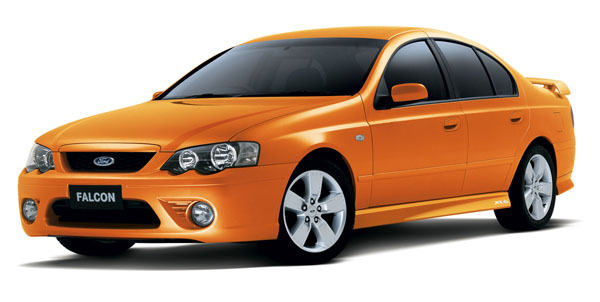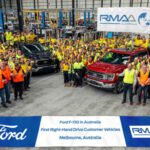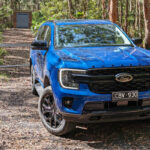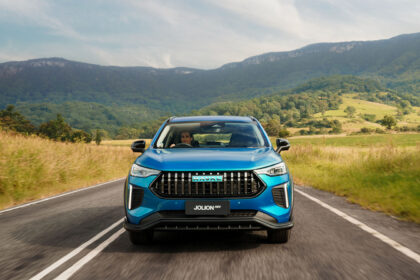In September 2015 Ford Falcon celebrated its 55th birthday in Australia. Sadly, it has just entered its final year of production. They have long been favourites on the used-car scene, especially for those living in the bush.
Most Falcons are everyday sedans, station wagons and utes. Two-door hardtops and panel vans were also built back in the old days beyond the scope of this article.
The demise of the Falcon may mean specialised models, such as XR6, XR8, GT, and any with supercharged or turbocharged engines (except for the four-cylinder turbos) could increase in value – no promises though.
Built tough for Australia may sound old fashioned, but there’s no doubt Falcons suits the needs of many hard headed Aussies, particularly those in country areas. Passengers can step out of a Falcon after a trip of hundreds of kilometres still feeling fresh and relaxed.
Handling is surprisingly good for a car of this size. You wouldn’t call it agile, but Falcons hold on when cornering at speeds far above those likely to be undertaken by most drivers.
Falcons have seating for five adults, but four makes more sense because the transmission tunnel takes up a lot of footroom in the centre-rear position.
The sedan’s boot is relatively shallow, but it’s easy to load thanks to a good-sized opening. From the BA Falcon model onwards things are better, though the boot’s still on the shallow side.
Falcon station wagons are great load carriers; as they’re built on a longer wheelbase than the sedan have a long, wide, practical cargo area. As a money saver, the rear end of the BA station wagon is virtually identical to that of the older AU wagon. Ford chose not to do an FG variant of the wagon. Instead, it created a Series III BF model to sell alongside the FG sedans. It wasn’t a success and the final Falcon station wagon was built in 2010.
Ford’s six-cylinder engines being examined in this feature all have a capacity of 4.0 litres, but come in several formats, including turbocharged units.
An interesting variant on the six-cylinder is a dedicated LPG engine. Common in taxis, though less so in private cars (except in Victoria) the factory built editions of this engine are all but indistinguishable from a petrol unit to drive. The LPG engine is thirstier than the petrol so fuel range suffers.
Ford fitted a 5.0-litre V8 to the AU, but it didn’t have a lot more performance than the six-cylinder units and was on the thirsty side. Much better were the V8s from the BA onwards, with capacities of 5.4 litres, later reverting to 5.0 litres but with much more technology, these provide plenty of grunt, make the right noises and are much loved by Ford enthusiasts. A supercharged Boss V8 was introduced in the XR8 late in 2014, a brilliant powerplant that it will be a shame to lose.
The EcoBoost Falcon follows the European engineering route of having a turbocharged four-cylinder powerplant. It has strong performance and nimble handling, the latter due to the lighter weight of the engine. However, it wasn’t a sales success, you can pick up a real bargain as a used-car.
Manual gearboxes are rare and probably best avoided in all but the sporting XR6 and XR8 because they can affect resale value. The manual was a five-speed until the BF series, when a six-speed was installed.
Prices for spare parts, servicing and repairs are very reasonable and there are Ford dealers just about everywhere in Australia. Most spare parts for the Falcons covered here are readily available, although a few bits on some older cars may have to come from a wrecker.
These are very simple cars to work on, with plenty of underbonnet and undercar space. We recommend having a workshop manual at your elbow before starting the work.
Insurance prices are generally very reasonable and premiums for the everyday models are invariably at the lower end of the scale. It will generally cost more to cover a V8 Falcon than a straight-six, and more expensive for a turbo six.
WHAT TO LOOK FOR
Many thousands of used Falcons will have been taxis at some time in their life. Be wary of one running on dedicated LPG; while these are quite common in Victoria, they are rare anywhere else in Australia.
Signs of an ex-taxi are vinyl, rather than cloth or leather, upholstery, severe wear both inside and out, holes where signs and a taximeter have been removed, and possibly a paint respray.
Engine wear is indicated by a reluctance to start and smoke from the exhaust and/or the oil filler cap when the engine is revved after it has been idling for more than about a minute.
Four-speed automatics can cause problems on hard-driven cars, especially if they have done a lot of work. Check they change gears cleanly and don’t hunt up and down through the ratios.
Be suspicious of any automatic that’s slow at going into gear from Neutral or Park.
Listen for a whining differential when driving at around 60 to 90km/h.
Check the cabin for damage caused by bored kids. In station wagons have a good look at the load area for signs of commercial use.
Rust is all but unknown in the newer Falcons being surveyed here when compared with the old ones. If you do find any it’s likely the Falcon has been crashed and poorly repaired.
CAR BUYING TIP
Country cars may spend a lot of times getting thumped over rough and ready roads, and could have been serviced by amateurs keen on saving a quid. Be wary.














